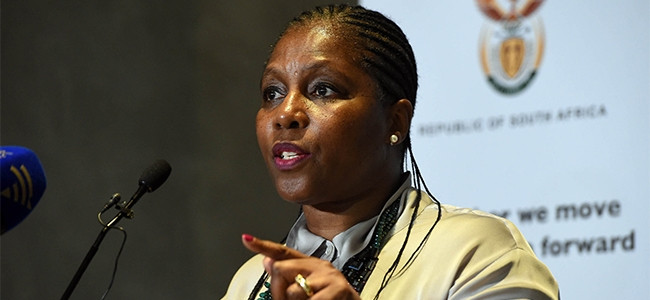
Communications minister Ayanda Dlodlo is hopeful a digital migration advisory council will help determine how best to ensure South Africans migrate from an analogue to digital television platform by next December.
The council, made up of representatives from broadcasters, telecoms companies, relevant government departments and state-owned entities, was established to gather ideas from the industry on how to fast-track SA's digital migration project.
SA missed the June 2015 deadline set by the International Telecommunication Union (ITU) for countries to complete the full switch from analogue to digital terrestrial television (DTT). The ITU has called on nations to switch over to allow radio frequency spectrum to be freed up for mobile broadband services.
In addition to missing the ITU deadline, the country's digital migration project has, in the past, been plagued by controversies that have further bogged down the process.
Since taking up the reins at the Department of Communications in March, Dlodlo has been determined to ensure the project moves ahead and for her department to meet the deadline that is less than next 15 months away.
According to Dlodlo, the advisory council is working around the clock to develop a project plan towards the December 2018 deadline. "This council is advising me on the initiatives we need to implement in order to fast-track the Broadcasting Digital Migration project."
ICT veteran Adrian Schofield says the idea of a council that brought together people from the industry to provide advice was in the original plans of the migration project, but seemed to fall away as a result of the structural changes within the ministry.
Schofield believes the minister needs all the help she can get and hopes the council will guide her in the right direction.
"One of the things that need to happen is to get off analogue TV signals to make sure that the majority of people can still receive a television signal and that it will be a digital signal...Getting television viewers off analogue television is only the first domino that needs to fall. There really shouldn't be any issue getting that done by the end of December 2018, provided the set-top boxes are manufactured and distributed."
STBs for all
Government has committed to supply five million subsidised set-top boxes (STBs) to low-income South African households.
The STBs are essential for the migration process as they are required to convert digital broadcasting signals on analogue TV sets. The decoders allow consumers to receive DTT without having to buy a new digital TV.
After placing an order for the first batch of STBs in 2015, the Universal Service and Access Agency of SA (USAASA) decided to halt production of these decoders last year, citing legal challenges.
USAASA, which has been charged with the responsibility of managing the production and installation of the government-subsidised STBs, admitted in Parliament last week to challenges in rolling out digital migration decoders.
According to the agency, the suspension of STB production resulted in project delays.
Schofield notes that meeting the December 2018 deadline is a simple logistical issue that can be solved by making and distributing the STBs.
"We need five million of them [STBs]. Ultimately, we probably don't need as many as that because by then the television manufacturers will be producing models that don't need a box; but we must have them installed in the homes of the most needy people who will otherwise be deprived of television viewing.
"That's the simple logistical problem, make them and distribute them. Whether you use the post office or private sector support, we just need to get on with it. If the council has a value to contribute, it will be how to solve the logistical problems," he explains.
Goal-oriented
Despite some of the challenges, the communications minister is determined to complete the implementation of the digital migration project within the next year.
Once the migration process is complete, South Africans will have access to DTT, she said. "The migration will release valuable spectrum, which will allow for more channels and more content to be broadcast in the same bandwidth as is currently used by one analogue channel."
According to Dlodlo, the availability of more television channels will lead to more demand for local content which will translate to growth for the local content industry.
"This will also spur industry growth and lead to job creation. Furthermore, it will result in better quality sound on both radio and visuals on television."
The minister also emphasised the need for a public awareness campaign for South Africans to understand the digital migration process.
"It is important for South Africans to understand that those who already have digital satellite television and OVHD [OpenView HD] are already migrated to digital.
"There are also a considerable number of people who already have integrated digital televisions sets, who only need to connect to digital television without needing a set-top box," she said.
Share